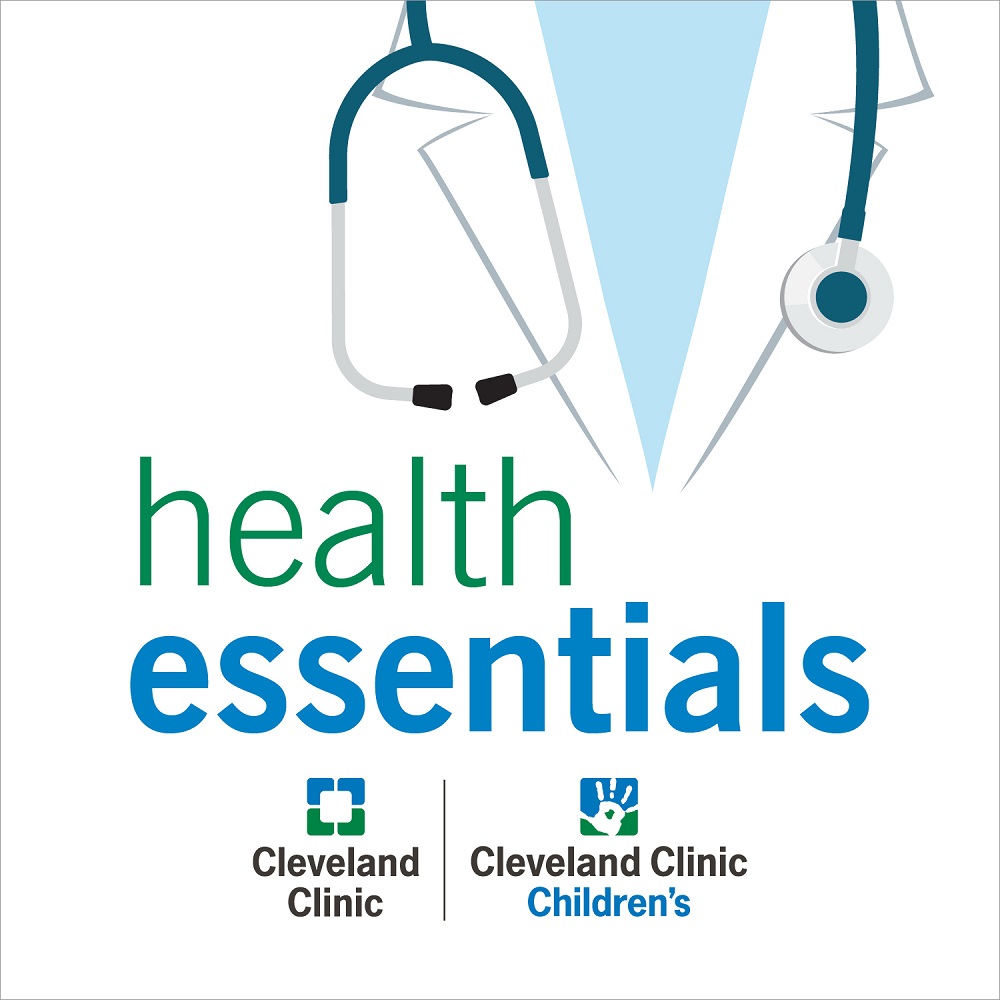Women and Heart Disease: Sex-Based Differences in Heart Failure

Amanda Vest, MBBS, explores sex-based differences in heart failure, focusing on biological and social factors that influence disease development, treatment response and outcomes in women. She highlights differences in risk factors, access to care and clinical trial representation that can influence heart failure outcomes.
Looking to refer a patient? Please reach out to our Physician Referral team Mon. - Fri., 8 a.m. - 5 p.m. (ET) at 855.751.2469.
Subscribe: Apple Podcasts | Podcast Addict | Buzzsprout | Spotify
Women and Heart Disease: Sex-Based Differences in Heart Failure
Podcast Transcript
Announcer:
Welcome to Cardiac Consult brought to you by the Sydell and Arnold Miller Family Heart, Vascular and Thoracic Institute at Cleveland Clinic. This podcast explores the latest innovations, medical and surgical treatments, diagnostic testing, research, technology and practice improvements.
Amanda Vest, MBBS:
Today, we’ll be talking about the relevance of sex similarities and differences (meaning biological attributes such as physiology and metabolism) that may affect the development and experience of heart failure between women and men. We’ll also touch on gender and the social constructs, roles and behaviors that could affect access to care and how patients experience their disease process.
With that outline, today I’m going to take a fresh look at this topic. You may have heard a little about sex differences in heart failure before. We have new HF Stats data from just a few months ago that helps us better understand contemporary etiologies and outcomes. We’ll talk about similarities and differences in presentation and when treating heart failure in women.
We’ll touch on HFpEF [heart failure with preserved ejection fraction] and why it is more common in female patients as they age. We’ll also touch on cardiogenic shock with sex-specific considerations and updates in the peripartum cardiomyopathy field.
As you all know, the current estimates are that at age 40, adults in America have a one in four risk of incident heart failure. That is fairly consistent across the sexes. There’s some data from a few years ago about lifetime risk of HFpEF versus HFrEF [heart failure with reduced ejection fraction], with the HFpEF risk higher for women, while men have a fairly similar risk between HFpEF and HFrEF. Across men and women, we see differences in age distribution at which we are observing heart failure, with perhaps women showing prevalence later in life.
But notable, the leading causes of heart failure are consistent across sexes. Ischemic and hypertensive disorders remain the leading causes for both males and females who develop heart failure. There are also important differences in traditional risk factors for heart failure development between sexes. For example, hypertension and obesity, two of the biggest risk factors driving heart failure development, disproportionately affect women and lead to heart failure.
Diabetes is a more potent risk factor for heart failure development in women, with five times the risk versus to two times the risk for a man who has diabetes. Smoking is also a more potent risk factor in women.
There are also some interesting sex-specific diseases and etiologies to consider. In terms of autoimmune diseases, such as SLE [Systemic Lupus Erythematosus] and RA [Rheumatoid Arthritis], which predominantly affect women, and an inflammatory cardiomyopathy can result.
Breast cancer therapy, either chemotherapy-associated cardiomyopathy or radiation of the left breast, can cause cardiomyopathy. Pregnancy is an interesting window into future heart failure risk. Not only can women develop peripartum cardiomyopathy during later pregnancy and postpartum, but cardiovascular events occurring during pregnancy actually tell us quite a bit about subsequent heart failure incident risks.
In terms of presentation with coronary artery disease and acute coronary syndromes, patients presenting with stress cardiomyopathy, known as Takotsubo, and perhaps some sex specific appearances on the angiogram, with more likelihood of spontaneous coronary artery dissection.
I'm just going to focus on these last two with a couple of pieces of data that I think are interesting. It’s this very interesting European publication regarding cardiovascular events occurring within pregnancy and subsequent heart failure development as the years go by. Particularly for preterm delivery, the hypertensive disorders of pregnancy, pre-eclampsia, we are seeing within the first ten years a very significant elevation in the risk of heart failure development. For gestational diabetes, it's actually later on that the risk becomes the most significant. So, I do think it's important, when speaking to a person regarding their risk of cardiovascular disease development or trying to discern if they have heart failure, to take that pregnancy history and see if there are some clues towards that risk.
As you’re aware, the majority of individuals presenting with a stress cardiomyopathy are women. Approximately 90 percent of cases in the International Takotsubo Registry are women, with emotional triggers being the precipitates identified in just over a quarter of cases and apical ballooning morphology being the most common type. Fortunately, most cases recover, but there is still a 20 percent death rate at ten years.
An overall message about outcomes by sex in patients with heart failure. Although women with heart failure generally have lower mortality than men, unfortunately, they tend to have lower quality of life with a heart failure diagnosis and greater symptom burden. This is shown across the PARADIGM and ATMOSPHERE trials, where women had lower rates of heart failure hospitalization, cardiovascular death and all-cause death than men.
But, they're also showing a lower, meaning worse, Kansas City Cardiomyopathy [KCCQ] summary score, which is a patient-reported health status measure, as well as higher rates of dyspnea, orthopnea, PND, edema and slightly greater prevalence of the signs, on physical exam, of heart failure.
The HHS stats data corroborate this slightly more favorable all-cause mortality outcome for women. Curves representing females with HFrEF, mildly reduced EF and preserved EF are fairly close [to males]. Interestingly, the Get With The Guidelines heart failure hospitalization registry shows that although women have lower five-year mortality, they actually end up with an excess of years of life lost, presumably due to the greater female life expectancy.
Now, overall, we should acknowledge that guideline-directed medical therapies in their randomized controlled trials have performed very well across the sexes. Indeed, the guidelines give no sex differentials in terms of optimizing our patients on these medications for all our phenotypes of heart failure. But there are a couple of medications to just be aware of for their sex specific performance in trials.
Firstly, we have the DIG trial, harking all the way back to 1997. There was a reduction in heart failure hospitalization, but overall, no impact on mortality. And yet, there is quite a gap, in terms of proportion of life between women in placebo arm who had the more favorable survival and women with digoxin who ran a lower survival. Women in the placebo arm had more favorable survival than those on digoxin. That effect is particularly pronounced once women have a drop in serum level of greater than 1.2, so do look out for that.
Also of interest is Sacubitril-Valsartan. Some of you will be aware across the spectrum of ejection fraction, there's some differential in terms of the effectiveness of this drug. The greater effectiveness is seen when the ejection fraction is low, with some loss of effectiveness as we come up through the mildly reduced and into the normal EF ranges. But it is women who actually show greater benefits from Sacubitril-Valsartan than men. As we come in on the curves to the more normal ejection fraction ranges. That is just something to consider when treating women with mildly reduced or preserved ejection fraction heart failure.
There are also some device specific considerations. In fact, these two meta-analyses were both performed by electrophysiologists here at Cleveland Clinic. Firstly, an analysis of the five fundamental trials of ICDs for primary prevention actually showed women and men with the same mortality, but less appropriate interventions from the defibrillator for women, and a lower impact on sudden cardiac death prevention.
However, when we look at the CRT category synchronization therapy response, we actually see female sex being amongst those predictors of a good response to CRT pacing. So, a woman with a left bundle and non-ischemic cardiomyopathy can be super responders to this therapy. Of note, my colleague, Dr. Eileen Hsich, has been working in this area, and has a PCORI-funded study called CONTEMP-ICD to really look again at these response rates in terms of primary prevention of ICDs.
For transplantation, we see that women actually have a slightly shorter wait time, as compared to men, when listed for heart transplantation. That's likely to be because of their smaller body size and ability to take some of the smaller donors, which are advantageous in the setting.
At the current time, there's actually no sex based difference in waitlist mortality. Previously, women had a slight excess in mortality, but fortunately, we don't see that anymore. It remains that the majority of donor hearts are male, and there are no sex based differences in terms of post-heart transplant survival in the current era.
In terms of left ventricular assist devices, the only currently FDA-approved durable LVAD device is the HeartMate 3. We can turn to its randomized controlled trial MOMENTUM 3 and look at Doctor Ramu's recent study which shows no difference in survival across women and men at 24 months of LVAD support. However, it was observed that rates of GI bleeding, stroke and major infection are higher in women than men, so there is still an excess of poor outcomes with regard to these adverse events.
I thought it was also interesting to look at a few pieces of information about access to care for women regarding the heart failure management.
A recent scoping review of referrals to a heart failure clinic showed that a higher proportion of men were referred than females. In a Canadian analysis of new onset heart failure, women were 22% less likely than men to be referred to a cardiologist. In a very recent British review of heart failure hospitalizations during the Covid era, heart failure specialty care was associated with lower in-hospital mortality and long-term mortality.
One recent US single-center review showed that women as a service center were less likely to be listed for transplants, largely due to their tendency to be more sensitized with antibodies, but more likely to receive destination therapy LVAD support.
Now just touching on a few areas, to round us out. More than half of HFpEF patients are women. We’re still trying to understand why this is the case. There may be sex-specific expression of genes, differences in sex hormones, inflammation, risk factor clustering, but it's clear that there are, differences at the level of the heart, such as smaller cardiac chambers that are stiffer, differences in cardiac metabolism, as well as vascular dysfunction differences, particularly in the postmenopausal female.
A recent study of sex-based hemodynamic findings in patients with HFpEF illustrated some of these points. The hearts were stiffer in women with their peak exercise wedge pressure jumping up more. They achieved a lower stroke volume during exercise, and there was evidence of poorer ventricular arterial coupling, with poorer systemic vascular compliance.
In cardiogenic shock, we have seen, for some time, that particularly in a younger population of individuals aged 18 to 55 years, that women have tended to have higher mortality for acute MI cardiogenic shock. Overall, for both sexes, mortality is somewhat coming down. But we see in a national inpatient study analysis, some of the differences that Dr. Jacqueline Tamis-Holland alerted us to, where the adjusted odds ratio for in-hospital mortality in women was significantly higher when PCI was not received and when mechanical circulatory support was not given for these younger patients with cardiogenic shock due to acute coronary syndrome.
Dr. Leslie Cho and I had the opportunity to write an editorial on this. We recognized that picking up an MI in this setting may have some gender based differences. That can be reasons why PCI is not appropriate, such as SCAD. There are issues with our currently available temporary MCS devices, in that these fairly large profile pumps are not ideally suited to women with smaller caliber arteries, on average, than men. That probably speaks to some of the excess of complications that we see amongst women who receive these pumps for cardiogenic shock supports.
In fact, just recently, the DanGer Shock trial in STEMI cardiogenic shock did give us a glimpse that this may be going on. Overall, in this study, micro axial flow pumps were helpful for patients presenting with STEMI shock. However, looking through this plot, although there is overall benefit through many of these subgroups, we actually see for females there was not a benefit, which does again raise some concerns about if we are designing pumps appropriately for women's bodies. How do we get more women into trials of these lifesaving therapies?
Our final topic is peripartum cardiomyopathy. You may be aware that in Europe there's much heavier use of bromocriptine. That actually features within European Society of Cardiology statements, using the BOARD scheme, standing for bromocriptine, oral heart failure drugs, anticoagulation, vaso-relaxants and diuretics.
The data behind bromocriptine is, some of it randomized, much of it from Africa and the study from Europe actually randomized between differential dosing patterns rather than being placebo-controlled. For those reasons, the US guidelines did not incorporate bromocriptine into recommendations regarding heart failure and pregnancy. You'll see the guidelines stuck to areas where there is clearer data in terms of patient-centered counseling for preconception, the use of anticoagulation for patients with a low EF during pregnancy, and of course, avoidance of medications that are harmful to the fetus.
This interesting report from a ESC-sponsored registries spanning 11 sites internationally looked at women who had had peripartum cardiomyopathy, who either went on to have no further pregnancies or went forward to pregnancy. Interestingly, even those who did not have full left ventricular recovery before a subsequent pregnancy, there were a number who underwent therapeutic terminations, but the maternal mortality rate was low, although not quite as low as those who had already recovered the left ventricular ejection fraction before the subsequent pregnancy.
I'd like to just note that my colleague, Dr. Karlee Hoffman, does lead a cardio obstetrics clinic, along with the maternal fetal medicine group, focusing across the continuum of pregnancy care. For example, also delivering some very high-risk patients and getting good outcomes even despite very advanced heart failure.
We are a site for the REBIRTH trial in peripartum cardiomyopathy. This is a U.S.-involved study of bromocriptine versus standard therapy that we hope will really shed light on this issue of whether bromocriptine is helpful in addition to the contemporary U.S. standard of care for peripartum cardiomyopathy diagnosis.
To summarize, we've talked a little bit about etiologies and female-specific risk factors, some site-specific considerations for Digoxin and Sacubitril-Valsartan. But, overall, our drugs are excellent in both sexes. We've talked a little bit about the predominance of diastolic dysfunction in women and other mechanisms that may lead them to have HFpEF as they age, as well as some considerations around AMI cardiogenic shock. Temporary mechanical support pumps need further innovations specifically to accommodate female vasculature, and the ongoing studies around bromocriptine.
Many thanks.
Announcer:
Thank you for listening to Cardiac Consult. For more information or to refer a patient to Cleveland Clinic, please call 855.751.2469. We welcome your comments and feedback. Contact us at heart@ccf.org. Like what you heard? Subscribe wherever you get your podcasts or listen at clevelandclinic.org/cardiacconsultpodcast.

Cardiac Consult
A Cleveland Clinic podcast exploring heart, vascular and thoracic topics of interest to healthcare providers: medical and surgical treatments, diagnostic testing, medical conditions, and research, technology and practice issues.



